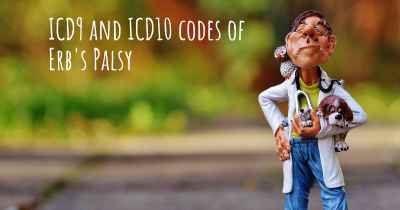What is the history of Erb's Palsy?
When was Erb's Palsy discovered? What is the story of this discovery? Was it coincidence or not?

Erb's Palsy, also known as Erb-Duchenne Palsy, is a condition that affects the nerves in the arm, resulting in weakness or paralysis. It is named after Wilhelm Erb, a German neurologist, who first described the condition in 1874. Erb's Palsy is typically caused by a birth injury, specifically damage to the brachial plexus, a network of nerves that control movement and sensation in the shoulder, arm, and hand.
Historical Background:
The understanding and recognition of Erb's Palsy have evolved over time. In the late 19th century, Erb's initial observations laid the foundation for further research and understanding of the condition. He identified the specific nerves involved and described the characteristic symptoms, such as weakness and loss of motion in the affected arm.
Birth Injuries and Brachial Plexus:
Erb's Palsy is primarily caused by birth injuries, particularly during difficult or complicated deliveries. The brachial plexus can be damaged when excessive force is applied to the baby's head, neck, or shoulder during the birthing process. This can occur in cases of shoulder dystocia, where the baby's shoulder becomes stuck behind the mother's pubic bone.
Advancements in Diagnosis and Treatment:
Over the years, advancements in medical technology and understanding have improved the diagnosis and treatment of Erb's Palsy. Diagnostic techniques, such as nerve conduction studies and electromyography, help identify the extent and location of nerve damage. These tests allow healthcare professionals to develop appropriate treatment plans.
Non-Surgical and Surgical Interventions:
Non-surgical interventions are often the first line of treatment for Erb's Palsy. Physical therapy plays a crucial role in improving muscle strength, range of motion, and overall function. Occupational therapy may also be recommended to enhance fine motor skills and daily activities.
In cases where conservative treatments do not yield satisfactory results, surgical interventions may be considered. Nerve grafts, nerve transfers, and muscle transfers are some of the surgical procedures used to restore function and improve the quality of life for individuals with Erb's Palsy.
Support and Advocacy:
Support groups and advocacy organizations have played a significant role in raising awareness about Erb's Palsy and providing support to affected individuals and their families. These groups offer resources, information, and a platform for individuals to share their experiences and seek guidance.
Prevention and Risk Reduction:
Efforts have been made to prevent and reduce the occurrence of Erb's Palsy. Obstetricians and healthcare providers receive training on proper delivery techniques to minimize the risk of birth injuries. Additionally, prenatal care and early identification of risk factors can help healthcare professionals take necessary precautions during childbirth.
Continued Research:
Research in the field of Erb's Palsy continues to explore new treatment modalities and interventions. Scientists and medical professionals are investigating stem cell therapy, nerve regeneration techniques, and other innovative approaches to improve outcomes for individuals with Erb's Palsy.
In conclusion, Erb's Palsy has a rich history that dates back to the late 19th century when Wilhelm Erb first described the condition. Over time, advancements in medical knowledge, diagnostic techniques, and treatment options have improved the understanding and management of Erb's Palsy. Support groups and advocacy organizations have also played a crucial role in providing resources and support to affected individuals and their families. With ongoing research and advancements, the future holds promise for further improving the lives of those living with Erb's Palsy.








